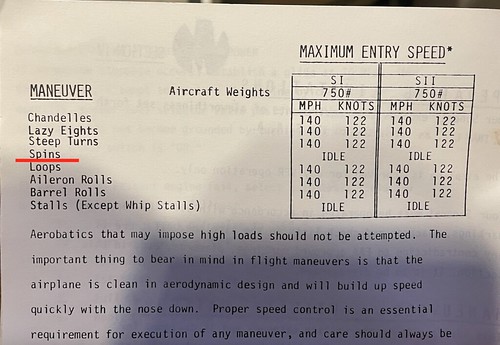Flyingfool
Active Member
- Joined
- Feb 1, 2021
- Messages
- 33
Since some folks do some limited aerobatics in Sonerai. I was wondering if the design had been spin tested. Especially with the original smaller tail and rudder?
I am not saying this should be done intentionally all the time. But from my understanding falling out of a loop or some other maneuver could end up in a spin.
Just wondering as the rudder “looks” pretty small. But looks are often deceiving.
I am not saying this should be done intentionally all the time. But from my understanding falling out of a loop or some other maneuver could end up in a spin.
Just wondering as the rudder “looks” pretty small. But looks are often deceiving.




